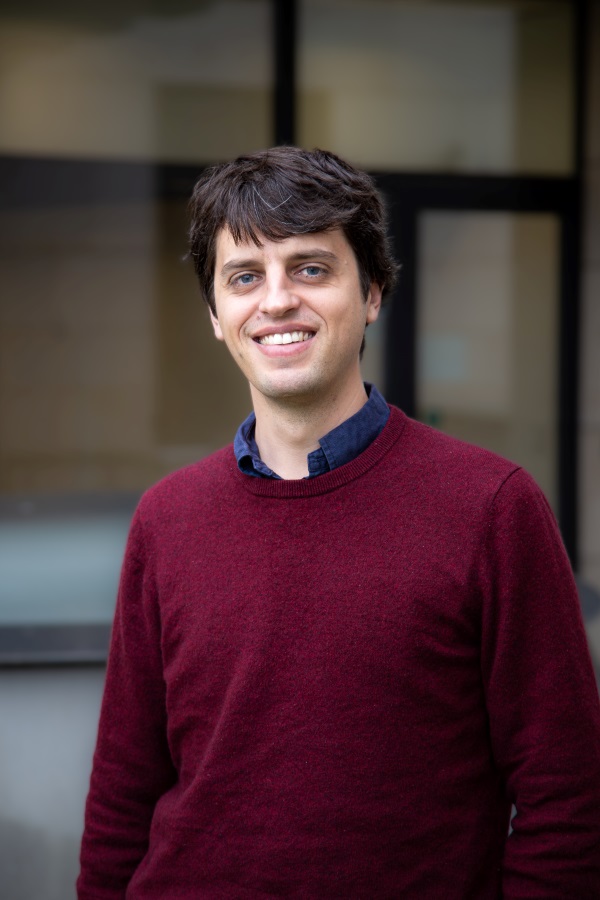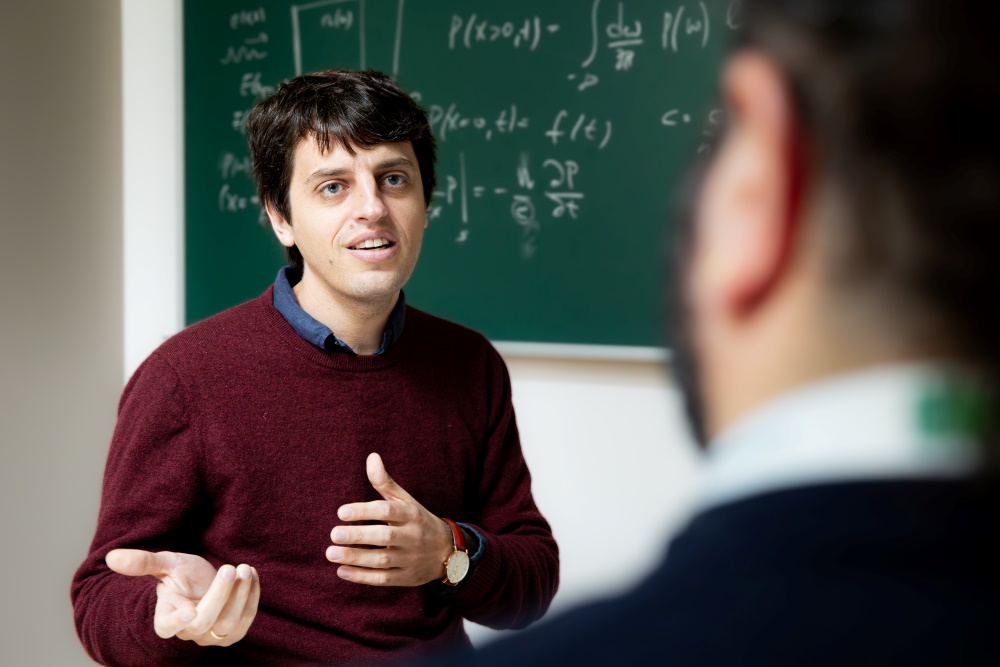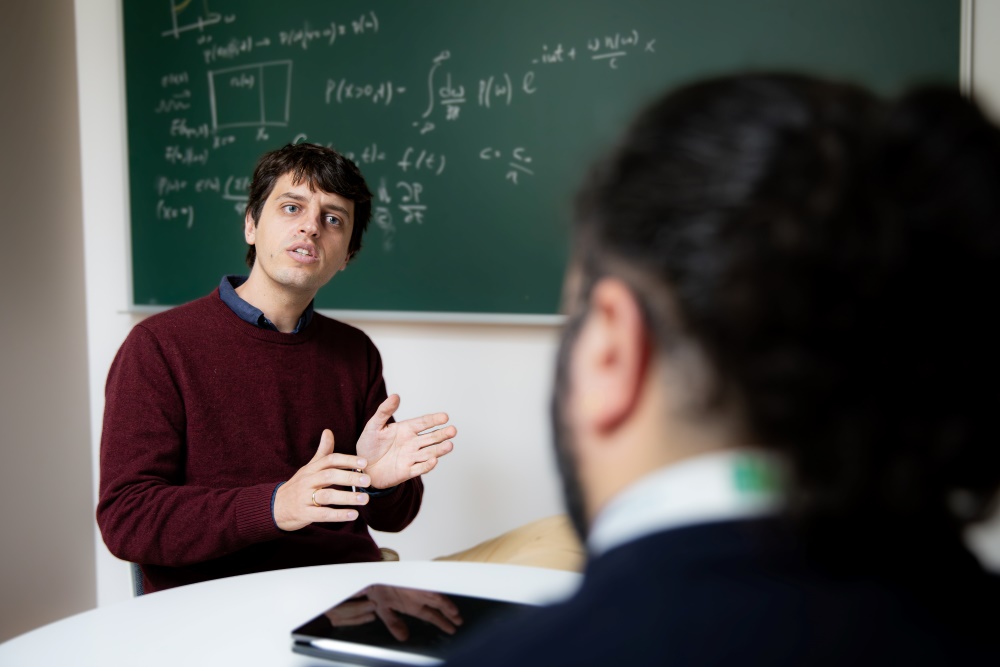November 12, 2024
Bringing Quantum Mechanics to Life
New ISTA assistant professor Julian Léonard makes abstract quantum properties visible
From the realm of the abstract to the tangible, the new assistant professor at the Institute of Science and Technology Austria (ISTA) Julian Léonard brings the quantum properties of matter to life. Having done research at ETH Zurich and Harvard, Léonard joins ISTA from TU Wien. In this interview, he talks about the central role of quantum mechanics in nature, how ultracold temperatures magnify atomic interactions, and what this has to do with board games.

“Things are possible in quantum mechanics that we find hard to imagine in our tangible world.”
You push the limits of quantum physics and optics to realize new, exotic states of quantum matter. What does “exotic” mean?
Let’s imagine states of matter as arrangements of atoms with specific properties. Usually, they have some kind of order that can be described, such as the direction of the magnetization in a magnet. In material science, states of matter are often regarded from a classical physics perspective, where atoms behave like particles. But we are becoming increasingly aware that nothing in nature can exist without quantum mechanics, the realm in which tiny objects behave simultaneously like particles and waves. Thus, my team and I are finding ways to understand how states of matter arise from a purely quantum-mechanical perspective. This lets us sometimes stumble upon new quantum properties that we could call “exotic”. Since nature is quantum mechanical at its heart, we want to push the limits of what quantum states can achieve.

You are interested in engineering quantum states with complex, non-local entanglement. How can you explain this to a layperson?
The quantum world is governed by striking correlations such as entanglement, which stipulates that the properties of two particles remain linked regardless of physical separation. This is the area where quantum physics manifests at its best. The more entangled a system is, the harder it is for classical physics to account for its properties without quantum mechanics. This is why systems with a lot of entanglement are a good place to start if we want to find new quantum phenomena.
What sparked your interest in atoms and their properties?
People normally perceive quantum mechanics as too abstract, something that happens on a minute scale. However, many concepts in physics become clearer when built from the bottom up. With my group, I work on bringing the quantum realm to life, making it visible. We explore the quantum properties of matter literally before our eyes using an optical microscope and fluorescence. Exciting quantum properties like entanglement arise at ultracold temperatures, where no other field of physics can detect any movement. The colder the temperature, the larger the quantum mechanical effects. These ultracold temperatures magnify the quantum effects from the atomic scale to a scale similar to the size of a cell. This is as if one person can move an entire mountain.
“The beautiful part about the quantum realm is that once scientists understand its rules, they can play with them like in a board game.”
If we were to dive into the quantum world, what would it look like from within?
The beautiful part about the quantum realm is that once scientists understand its rules, they can play with them like in a board game. Things are possible in quantum mechanics that we find hard to imagine in our tangible world. For example, a mug on a table won’t go through the surface. But in the quantum world, there is a small probability that a particle would move through such an obstacle. We must accept these rules and learn to play the game. Only then can we explore the rules’ limits and reach the edge of the possibilities, such as uncovering completely new phenomena in the quantum states of matter.

Your group recently generated the first array of single atoms trapped in optical tweezers. Why is this a major milestone?
Optical tweezers are focused beams that hold and move individual atoms, so we can view them under the microscope using fluorescence. We can thus grab individual atoms and move them around to help them interact. Now, after two years, we have finally managed to trap single atoms in a tweezer array. The atoms can be arranged in a regularly spaced manner or arbitrarily so they can interact in programmed ways. We can thus explore the atoms’ entanglement and quantum states, which opens up avenues for exciting physics. This work will ultimately help us advance quantum computing devices and simulation.

After obtaining your PhD at ETH Zurich, your path led you to Harvard for a postdoc before starting your research group at the Vienna University of Technology. Why did you choose to move to ISTA?
ISTA has an exceptionally inspiring research environment, and I greatly value the interactions with scientists in diverse fields. I’m excited to build my own state-of-the-art lab and feel well-supported here. My existing group at TU Wien will move to ISTA over the next year, and I plan on exploring new avenues in this new environment. I am excited about this new start!



